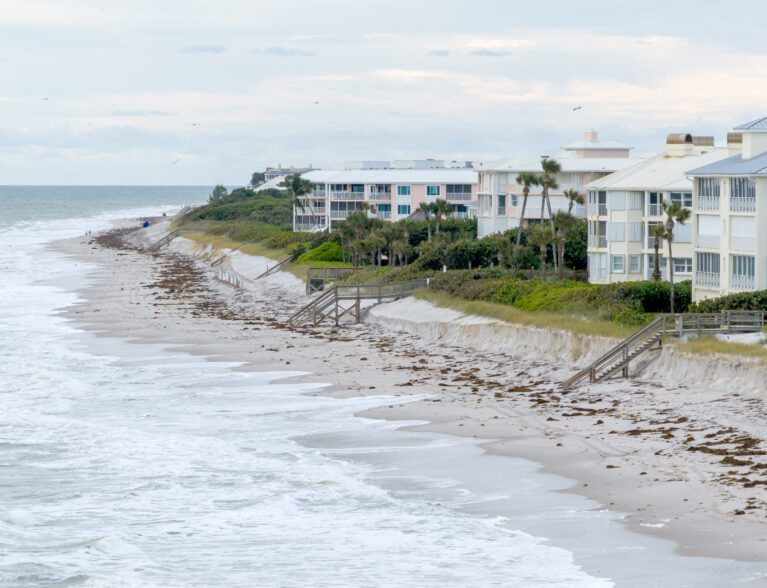
As cleanup from tornadoes continues, more is now known about this hurricane season’s erosion damage to our beaches and, overall, the news is good.
Much of the existing dunes are intact and performed as expected, said Eric Charest, Indian River County’s assistant natural resources director.
“Though some coastal erosion has occurred, no structures like homes or businesses were damaged as a result of the erosion,” Charest said. “At this time there are no plans for smaller emergency dune replacement at the county beaches, and the large-scale projects are moving forward.”
Indian River County was already in the process of replenishing beaches that had eroded during hurricanes Matthew (2016), Irma (2017) and Dorion (2019). Replenishment in Sector 3 was completed prior to March. Additional replenishment projects were paused earlier this summer to allow sea turtles to nest, said county Coastal Resource Manager Quintin Bergman.
The Indian River Shores dune restoration project dubbed Sector 4 will begin in the coming days and continue through April 2025, Bergman said. Beach Management Sector 4 in the county’s plan is a 2.9-mile section of shoreline that extends from approximately a half-mile south of the Turtle Trail Beach Access in Johns Island to approximately a half-mile north of the Tracking Station Beach Park near Mariner Village.
The project also includes planting approximately 147,788 native salt-tolerant dune plants on top of the dune, comprised primarily of sea oats, dune sunflower, railroad vine and panic grass.
The county has contracted with Dickerson Infrastructure to place approximately 135,000 cubic yards of beach-compatible sand to restore the dune at a cost of $6.6 million. Grant funds totaling $4.3 million have been awarded to the county for the Sector 4 Project from the Florida Department of Environmental Protection (FDEP) and the Florida Department of Emergency Management (FDEM).
The county has applied for an additional $1.6 million in Hurricane Ian and Nicole Restoration Reimbursement Grant Program (HRRGP) funds that are available on a first-come, first-served basis for reimbursement. A City of Vero Beach Sector 5 restoration project is planned for the winter of 2025-2026.
The local portion of funding for dune repair and beach replenishment projects comes from the 4% tourist development tax – also called the “bed tax” — that is added to the costs of hotel stays and other lodging when tourists come to visit. Voters will be asked on the 2024 general election ballot whether or not they want to add another penny to the bed tax, bringing it from 4 percent to 5 percent.
While a portion of the bed tax supports the beach programs, the county has also benefited greatly from leveraging FEMA assistance and FDEP grant funds when available, said Kylie Yanchula, the county’s Natural Resources Director. Maps of the various beach projects can be found on the county’s website, she said.
Indian River County’s beaches are the No. 1 draw for tourists, says Ben Earman, vice president for tourism and marketing for Visit Indian River County, Florida. “Our beaches are uncrowded and provide lots of sun and relaxation because we do not have high-rises along our beaches,” Earman said. “Visitors and locals use them daily and it is vital that we keep them maintained.”
“It should be noted that this tax is not paid for by residents – only those visiting and staying in our local accommodations,” Earman said. If voters approve, the added tax will begin in October 2025. More than half of the total bed tax – 2.75 cents – will go toward beach renourishment, with 2 cents going to tourism promotion, and the final quarter cent paying the lease on the Jackie Robinson Training Complex, Earman said.
This would bring the bed tax up to what it is in neighboring St. Lucie and Martin counties, and is expected to generate at least $1 million.



